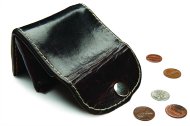
Recent news that Qantas is planning to slash its workforce by around 5000 jobs came not long after the national unemployment rate hit 6% for the first time in 10 years.
Meanwhile, the automotive industry, and its workforce, is still reeling from news of the impending closure of the Australian operations of Toyota, Holden and Ford.
However, a new study has found that, in the past, when the national unemployment rate was peaking, home loan affordability was at its highest level.
PRDnationwide's research department analysed the figures behind a decade’s worth of unemployment rates and their effect on home loan affordability.
Research manager Diaswati Mardiasmo said those who were claiming recent job losses would have a disastrous impact on the property sector needed to look at the figures.
It is a difficult situation for those directly involved and there is a level of understandable public outrage, he said.
“If you take the emotion out of this situation, the actual numbers show there is only intermittent correlation between increasing unemployment and decreasing home affordability.”
As an example, he cited March 2009 when the national unemployment rate topped 5.8% but home loan affordability was at its peak.
Mardiasmo said that the current climate is actually conducive to property purchases, with sector participants taking advantage of more relaxed lending practices and low interest rates.
But he added that it is always a good idea for buyers to do due diligence, manage risk and have a contingency plan in place to cope with any sudden changes to their employment status.
